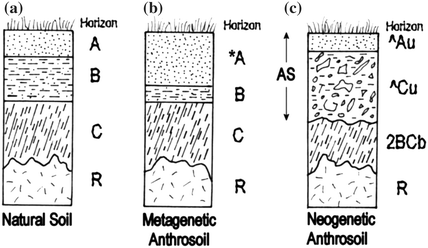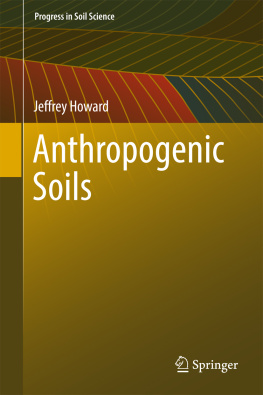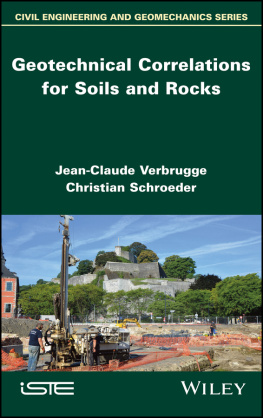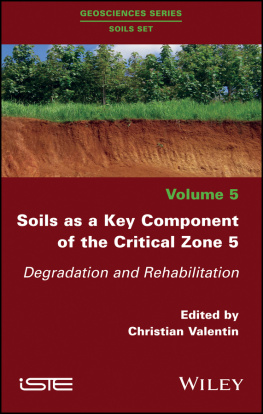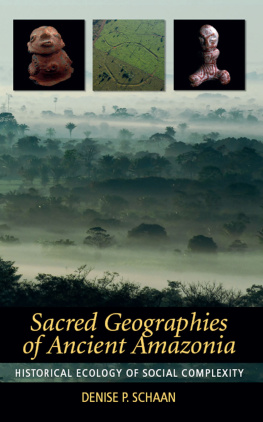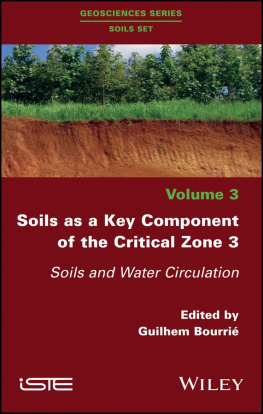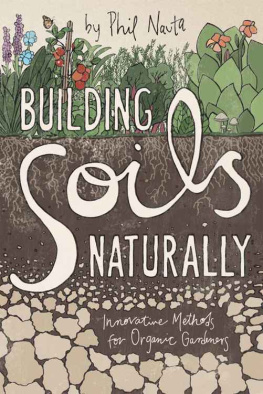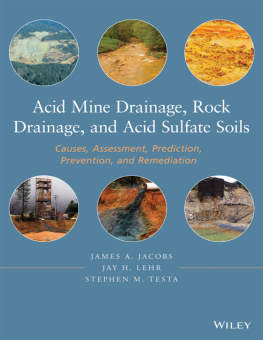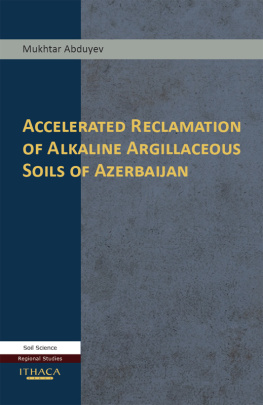Anthropogenic soils (anthrosoils) are soils that have been influenced, modified or created by human activity, in contrast to soils formed by natural processes. They are found worldwide in urban and other human-impacted landscapes. Anthrosoils are formed by: (1) sealing a natural soil beneath pavement or other artificially manufactured impervious material, (2) transformation of a natural soil by human action, or (3) development of a new soil profile in parent materials created and deposited by human action. Anthrosediments (anthropogenic sediments) are sedimentary deposits formed directly and intentionally by an artificial mechanism of sedimentation (e.g., urban fill). The soil profile developed in anthrosediment is an anthrosoil. Geocultural setting and historical context can be used to differentiate four types of anthrosoil: (1) Agricultural, (2) Archaeological, (3) Mine-related, and (4) Urban. Early scientific studies dating back to the late 19th century were focused on anthrosoils in agricultural and archaeological settings, whereas studies of urban and mine-related anthrosoils became common only during the late 20th century. The study of anthrosoils is of fundamental practical importance in the fields of agronomy and archaeology, whereas studies of urban and mine-related soils are often focused on issues of environmental significance.
1.1 Introduction
Soil is an accumulation at the Earths surface of organic matter, and the mineral by-products of weathering. Multiple natural processes generally operate simultaneously to form soil. The relative intensities of these processes are a function of five soil-forming factors (Jenny ).
Soil is usually a natural body characterized by horizons (layers) that are distinguishable from the initial parent material by additions, losses, transfers and transformations of energy and matter or, in the absence of horizons, by the ability to support rooted plants in a natural environment. The upper limit of soil is the boundary between soil and either air, shallow water, live plants, or plant materials that have not yet begun to decompose. In Soil Taxonomy, areas are not considered to have soil if the surface is permanently covered with water too deep (>2.5 m) for the growth of rooted plants. The lower limit of soil is at the boundary with unweathered parent material, or at 200 cm, whichever is shallower (Soil Survey Staff ).
Anthropogenic soils, also known as technogenic or man-made soils, are those that have been influenced, modified or created by human activity, as opposed to natural or native soils, which are formed by natural processes. They are found worldwide in urban and other human-influenced landscapes. Anthropogenic soils may have been so modified by human activity that the original soil remains only as a buried profile, or has been so drastically changed that it is no longer recognizable. They typically have characteristics that lie beyond the range of natural soil types, and require classification as a different type of soil.
Anthrosoils (anthropogenic soils) are formed by three basic mechanisms (Fig. ), usually with the aid of mechanized equipment (neogenetic). Each type can be modified subsequently by reclamation methods used with the goal of revitalizing the soil. Anthrosoils can have the combined features of natural soils and other specific properties developed in a human-impacted environment. Strictly speaking, any natural soil buried by an anthropogenic deposit is human-impacted regardless of the thickness of the artificial capping. However, for interpretive and mapping purposes, anthropogenic soils have been defined in various classifications systems as having developed in an artificial capping 3050 cm thick.
Fig. 1.1
Mechanisms of anthropogenic soil formation: a natural soil profile formed from granite bedrock; b natural soil changed into anthrosoil by long-term additions of organic matter (manuring) and deep plowing (metagenetic anthrosoil); c new soil profile developed in an anthrosedimentary deposit of urban fill containing demolition debris (neogenetic anthrosoil). AS Anthrosediment
Fig. 1.2
Profile of neogenetic anthrosoil at former demolition site: a previous site was demolished before construction of building (derelict) in 1942; b anthropogenic soil profile developed in fill overlies buried natural soil. Photos by J. Howard
Anthrosediments (anthropogenic sediments) are sedimentary deposits formed directly and intentionally by an artificial mechanism of sedimentation. For example, when soil and other earth materials are excavated, moved around, and backfilled along with building demolition debris, an anthropogenic sedimentary deposit (anthrosediment) is formed. The soil profile developed in these artificial parent materials is an anthrosoil. Human-deposited parent material may be comprised of natural materials (mine spoils, excavated soil, rock or regolith, etc.), artificial materials (brick, mortar, concrete, slag, etc.), or a mixture of both. In any case, this parent material can be regarded as a new anthropogenic sedimentary deposit if it is created directly and intentionally by human action. Natural sedimentation rates can be increased or reduced by human activity. For example, overgrazing by farm animals or building construction in a drainage basin can cause accelerated soil erosion which results in an increase in the volume of fluvial sediment downstream. In contrast, dam building may dramatically reduce sediment volume in a drainage basin downstream from the dam. These sedimentary deposits are not anthrosediments because the mechanism of sedimentation is natural, i.e. only the rate of deposition is affected indirectly by human action. It is also not generally possible in the field to distinguish such sediments from those of purely natural origin. To facilitate discussion, soils and sediments of anthropogenic origin will be referred to herein as anthrosoils and anthrosediments, respectively.
Four distinct categories of anthrosoil are distinguished in this book, based on geocultural setting and historical context: (1) Agricultural, (2) Archaeological, (3) Mine-related, and (4) Urban. In agricultural settings, anthrosoils are typically formed as a result of human modifications of a pre-existing natural soil by organic or inorganic materials additions over long periods of time in order to enhance soil fertility and crop productivity. They are also formed in rice paddies, and as a result of materials added as a result of irrigation. Anthrosoils are characteristic of archaeological sites of human occupation, and where humans have impacted soils through horticultural, ceremonial and burial activities. Mine-related anthrosoils are primarily associated with modern landscapes created by the surface mining of coal. In urban settings, anthrosoils are found in association with residential, industrial and manufactured land. Urban and mine-related anthrosoils are often highly compacted by earthmoving equipment, and are sometimes formed in parent materials that were imported from offsite. Urban, archaeological, and certain agricultural anthrosoils are unique in that they often contain artifacts (objects of anthropogenic origin), sometimes in great abundance, which may be comprised of substances not found in nature. Anthrosoils are also associated with suburban settings, streets, highways, and utility line or pipeline construction areas.
